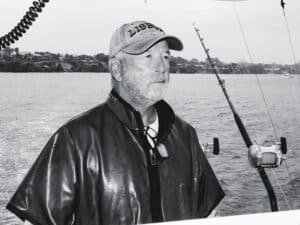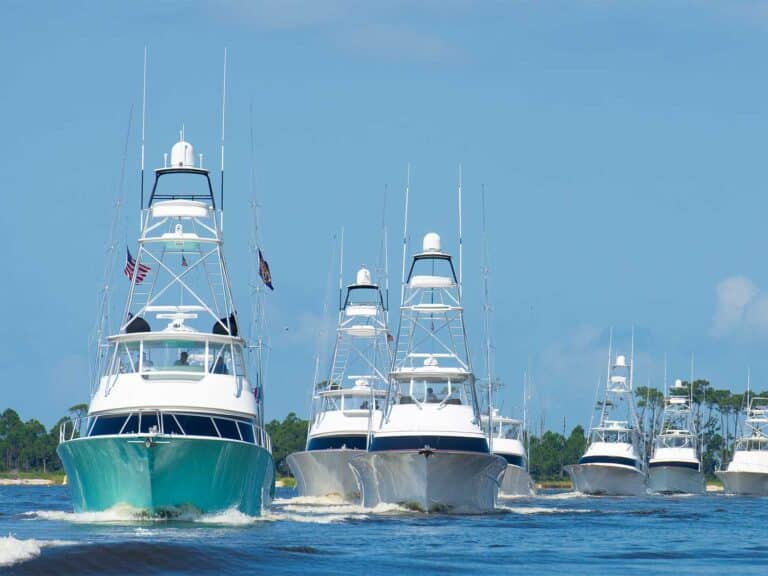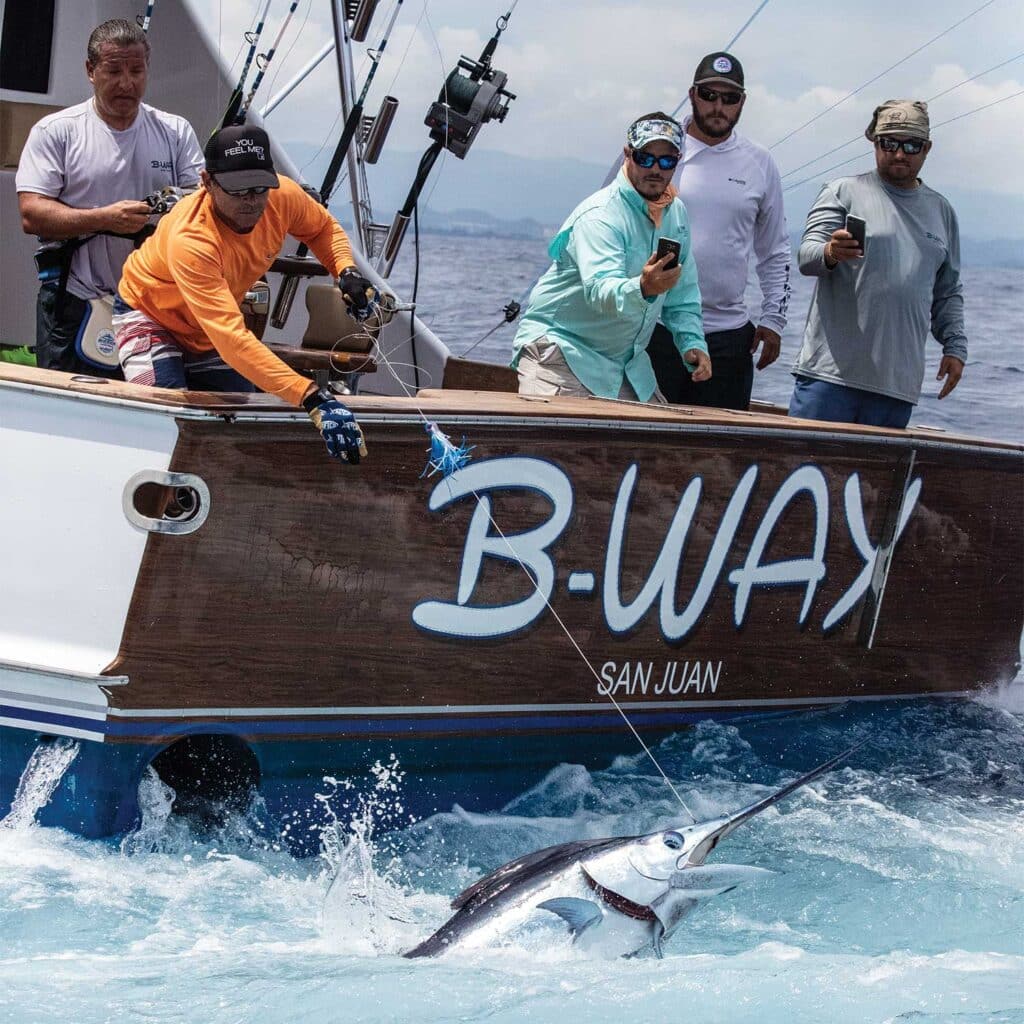
Special delivery: Sign up for the free Marlin email newsletter. Subscribe to Marlin magazine and get a year of highly collectible, keepsake editions – plus access to the digital edition and archives.
There is almost no getting around social media these days. Even if you’re one of the few holdouts who has managed to refrain from creating a profile, you can’t hide from the effects. From instant catch reports, epic billfish footage, and updates on the newest boats and gear to keyboard warriors shaming our industry, the internet is a melting pot of everyone’s opinions—for better or worse.
In many fisheries, being offshore used to be the ultimate cord-cutter, the cell signal being left behind with the sight of land. With new satellite technology and more boats taking on never-off-the-grid services such as Starlink, we’re now connected in some of the most remote places on Earth. It’s a big upgrade for safety but not so great for those looking to avoid distractions while on the troll.
To be clear, I’m not implying that social media or technological innovation is all a bad thing for the industry; I use these platforms like everyone else, and I’m currently working on a modern sportboat with satellite internet access. But there’s no doubt that it’s a far different fishing world than the one our parents and grandparents were afforded. There are times we might miss the simplicity and exclusivity of the non-digital dock talk, but social media is a place where your business can grow and where you can showcase yourself in whatever light you choose. After all, it can be whatever you want to make of it. The connected world we live in is here to stay, so I wanted to talk to some industry professionals to get their opinions on how it’s changed the game.
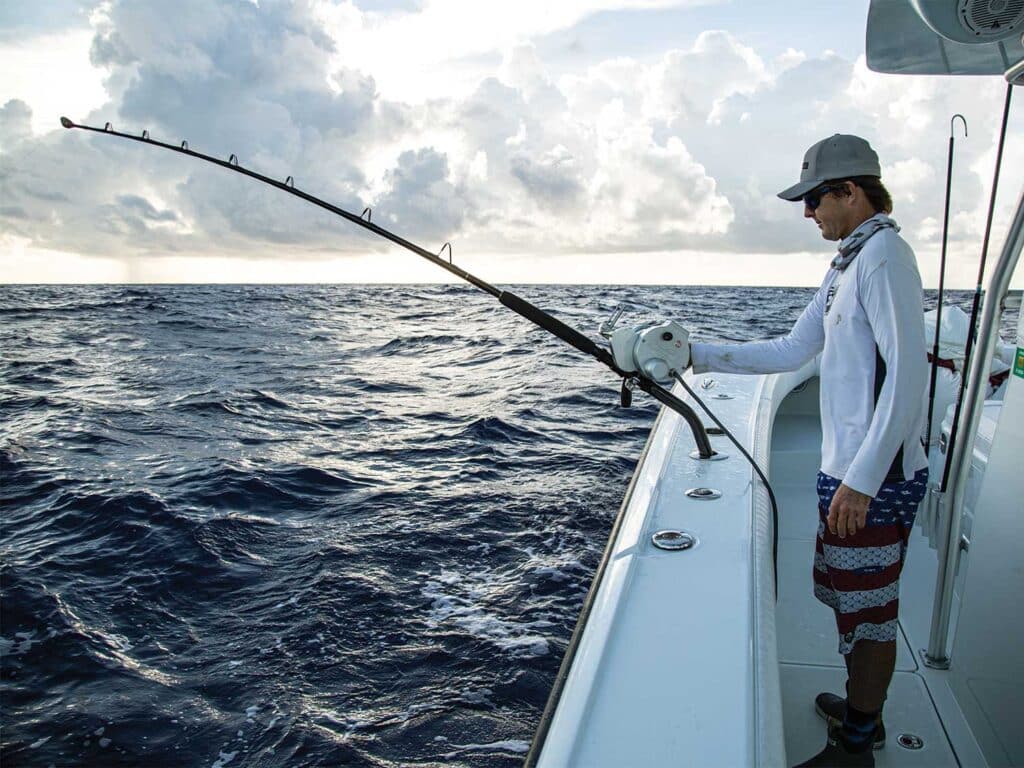
Trolling for Trouble
Unfortunately, trolling isn’t just a fishing term anymore—it’s become a digital sport of its own. The comments section on your feed is often a battleground for online arguments, where negative or uneducated comments were among the top irritants from the people I spoke to.
In the world of big-game fishing, nothing seems to bring out the haters more than a photo of a dead billfish. Whether it was worth big money in a tournament, couldn’t be revived boatside, or simply was harvested for consumption, a photo of a dead marlin is often met with some level of internet criticism. It’s important to keep in mind that many of these commenters have no idea what our sport is about at all.
“I try to take all the negative stuff with a grain of salt,” says Capt. Nick Stanczyk, who operates the well-known charter boat Broad Minded out of Islamorada, Florida. “The majority of the comments are good, but it can still wear on you. Every once in a while, on a windy day when I’m at home, I’ll get into it so I can get my side of the story out there, but it’s usually best just to let it go.”
Capt. Cory Gillespie of the 63-foot Titan Lunatico has had a similar experience with negative comments on a tournament marlin. “We weighed a 682-pounder in Bermuda last year, and it was reposted by another page months later. I couldn’t believe all the hate and negative comments—people talking about our egos and that they couldn’t believe we’d kill a fish like that. Then you look at some of their profiles, and it’s all deer antlers. Sometimes it’s just an open forum for people to throw mud,” he says.
It’s easy for people to hide behind a keyboard and make comments on things that they have no idea about, especially from an anonymous profile. Getting upset might be the natural reaction, but arguing with someone on the internet has rarely resulted in a positive outcome for either party.
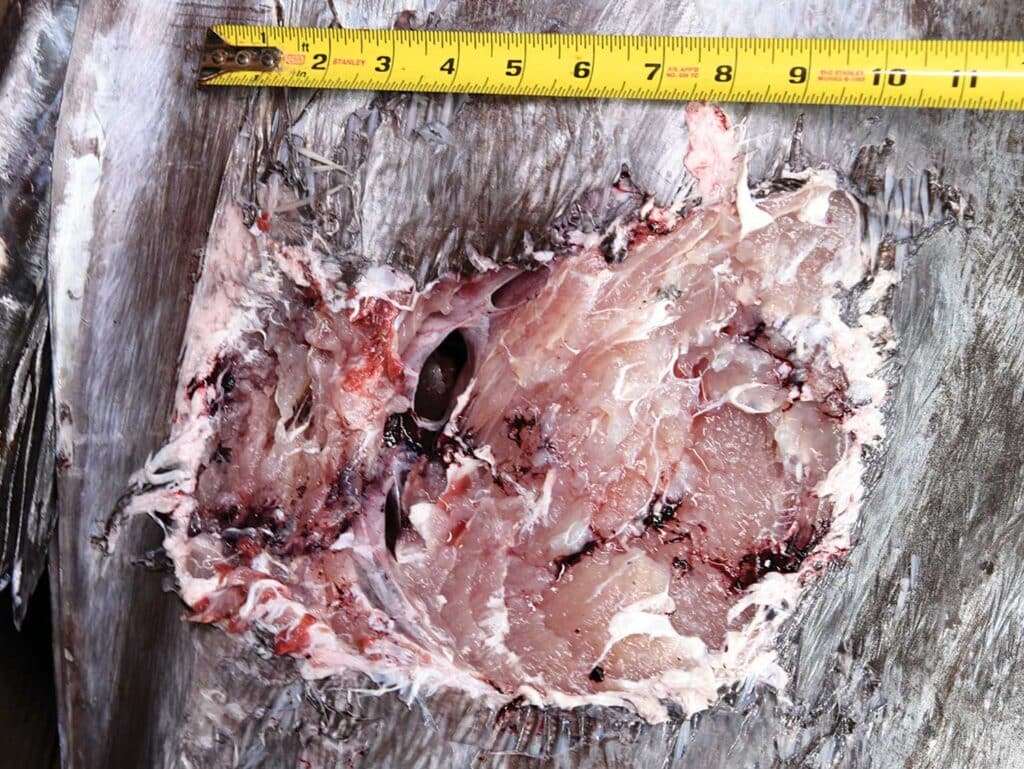
“Social media can be a toxic place,” says Capt. Dale Britt, who fishes out of Morehead City, North Carolina, on the 55-foot Jarrett Bay Weldor’s Ark. “And a prime example of that toxicity is the negative comments we saw with the results of this year’s Big Rock Blue Marlin Tournament.” Britt is referencing the internet frenzy that was sparked by the disqualification of a potential winning blue marlin because it was bitten by a shark during the fight, pointing out how the vast majority of the comments were coming from those who have no previous knowledge of big-game fishing, IGFA rules, or even how fishing tournaments operate.
This perniciousness runs rampant online, and really, the best way to combat internet trolls who want to spew hate on the sport-fishing community might be with simple facts: We release the vast majority of billfish that we catch; the ones that we do keep are almost always eaten or used for research; and no one wants the sport to continue and thrive more than those of us who are directly connected to it and do it for a living. If these fact-driven replies aren’t good enough, then it’s probably best to just let the trolls move on to their next victim. And thankfully, they will.
A Shrinking World
The digital world in general has become smaller, with virtually everyone on the planet being connected by some form of social media. Catches that used to take days or weeks to reach us are now being uploaded in near-real time, as well as amazing videos from all corners of the globe. “I used to have to dig to look up marlin videos online,” Gillespie says. “Now, it’s all instantly right there in front of you. Whether it’s seeing what your friends caught that day or a video of a marlin jumping over the corner of the cockpit, there’s some awesome stuff out there.”
Those elements seem to be the most endearing in the world of social media, and it gives us the ability to connect with fishermen who are passionate about what they do. And sometimes, social media can even prove to be useful as a fishing tool. “Now we can see what the boats 60 miles to the south of us caught today and get an idea of what to expect tomorrow with the movement of the Gulf Stream water to the north,” Britt adds.
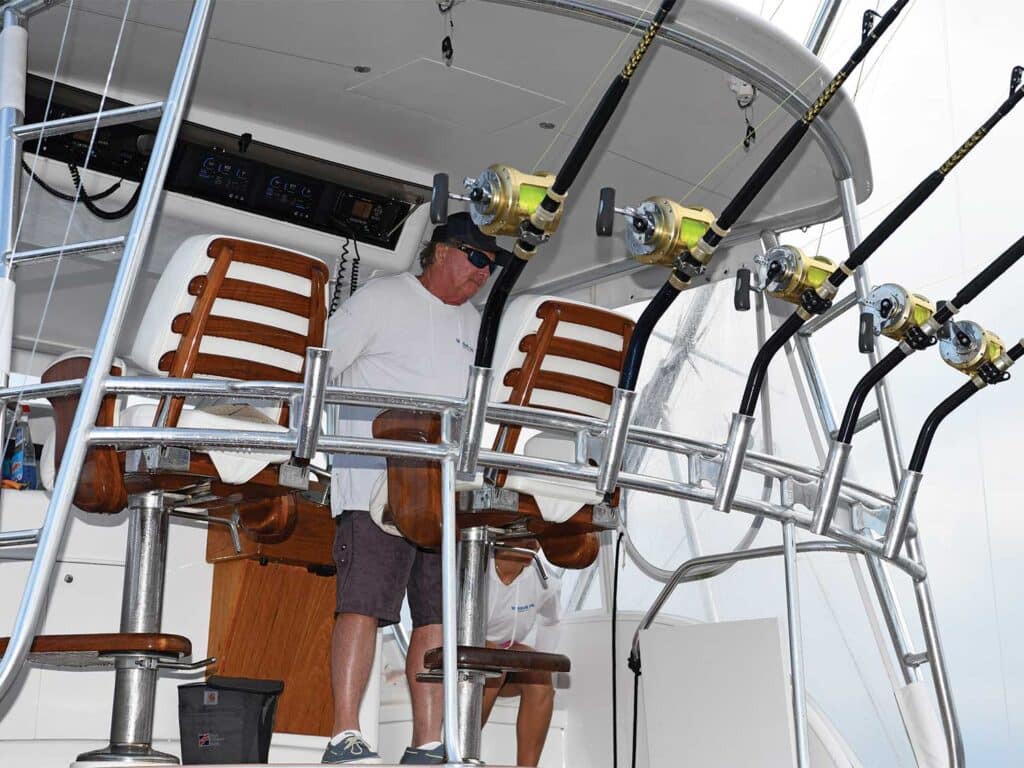
It’s important to remember, however, that social media is a highlight reel by design. What you’re seeing in your feed is usually short bursts of the best parts of a fishing day. Some users are more honest than others, but it’s rare to see a post about trolling around for a week with no bites or the mechanical failure they spent all night in the engine room fixing.
Fellow fisherman Theodore Roosevelt was quoted as saying that “comparison is the thief of joy” well before the first computer ever existed, but it’s a premise we should remember while online. I think that most of us are competitive by nature, even when we’re fishing for fun, and judging yourself against the best day online is usually a fruitless endeavor. Your awesome day catching a blue marlin out of North Carolina shouldn’t be devalued because someone in Costa Rica caught a dozen of them, or someone in Cape Verde caught a giant. I’ve seen charter guests with completely over-the-top expectations based on what they’ve seen online, who seem disappointed even after a great day by normal standards. The internet—and social media specifically—is just simply not a full-scale representation of reality. I’ve even been caught up in thinking that the bite was better in my backyard because of what I saw online. Seeing a few guys with photos can often make you forget about the 20 boats on the dock that didn’t have a successful day.
Digital Opportunities
Like any entity with a wide-ranging audience, social media is soaked in advertising. Some are very apparent, while others are veiled in a way that you might not even realize you’re being sold to. Social media influencers with large audiences are given incentives, usually in payment or product, to make a certain number of posts that advertise a company’s products. It’s the same idea as hearing what the hot lure has been from your dock partner and then going to pick one up. Companies use accounts that have a large and trusted following to recommend their products to a relevant audience, and the next thing you know, you’re clicking on that “Shop Now” button. The idea is nothing new in fishing; it’s just a more advanced form of the infomercial for the Helicopter Lure that I talked my grandfather into buying me as a kid.
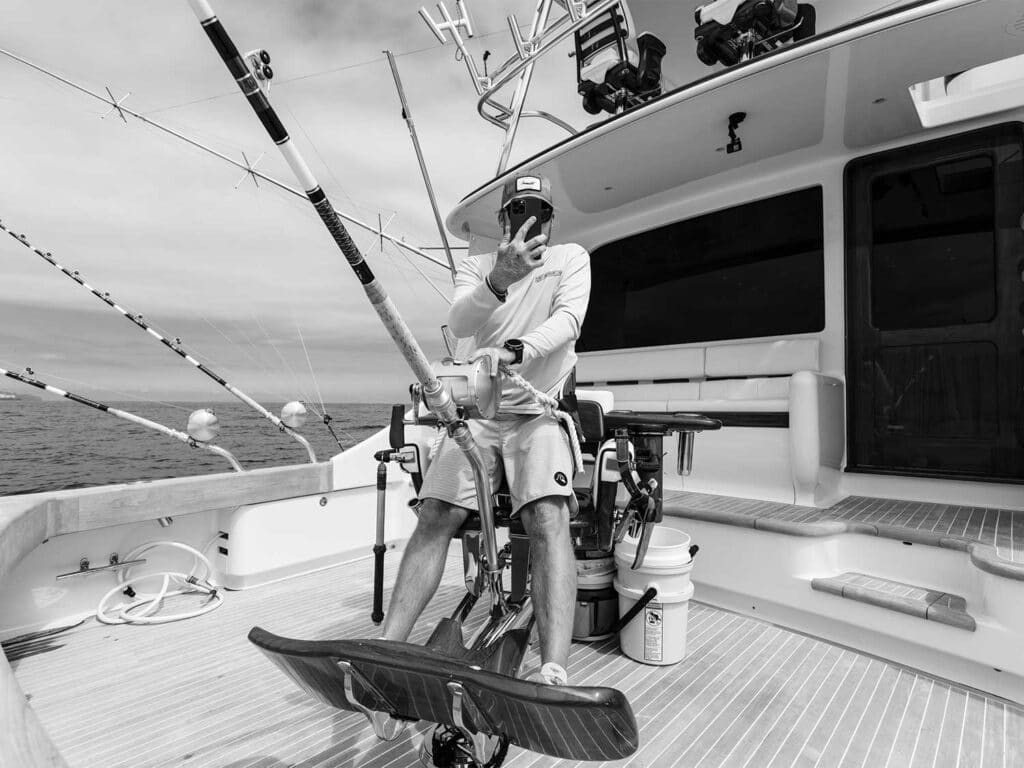
It isn’t just large companies that are finding their economic footing on social media. Plenty of charter operations and other fishing entrepreneurs have used the platforms as a free marketing source that can be hugely beneficial. Stanczyk is not only known for his success as a swordfish captain, but his YouTube channel and social pages reach a giant audience as well. He creates a wide variety of content for both entertainment and education, while at the same time promoting his charter business and the sponsorships he’s accrued. “Social media has its good and bad sides like everything else, but it’s helped me build my charter business over the past 10 years, and I wouldn’t have the living I have without it,” Stanczyk says. “When I was a kid, I always wanted my own fishing show, and now with YouTube, I can produce my own stuff and grow my business. It doesn’t cost you anything to advertise, besides your time, and there’s no guarantee of success, but anyone who tries at least has a chance.” Stanczyk also makes a great point about the internet allowing more people to form relationships with large corporations through sponsorship. “Previously, if you didn’t have a TV show or owned a magazine, you’d never be able to have those symbiotic relationships between companies and fishermen. Social media has bridged those gaps.”
Real Fishing vs. Internet Fishing
“There’s real fishing and there’s social media fishing, and sometimes the two overlap,” Gillespie says. Just like fishing reports, you have to wade through a little BS to find what the real story is. “In any sport, the most entertaining always gets the most attention. You have the guys who are grinding every day and don’t have time to take videos when they’re rigging baits who, incidentally, might be out-fishing everyone. It’s a different form of marketing where success isn’t necessarily attached to an appropriate level of fame.” It’s also important to remember that having thousands of Instagram followers doesn’t mean that person is any better than someone who has only a handful; it simply means that they’ve put in more effort to create content or have figured out the complicated nuances of the algorithms that control what pops up on the most timelines.
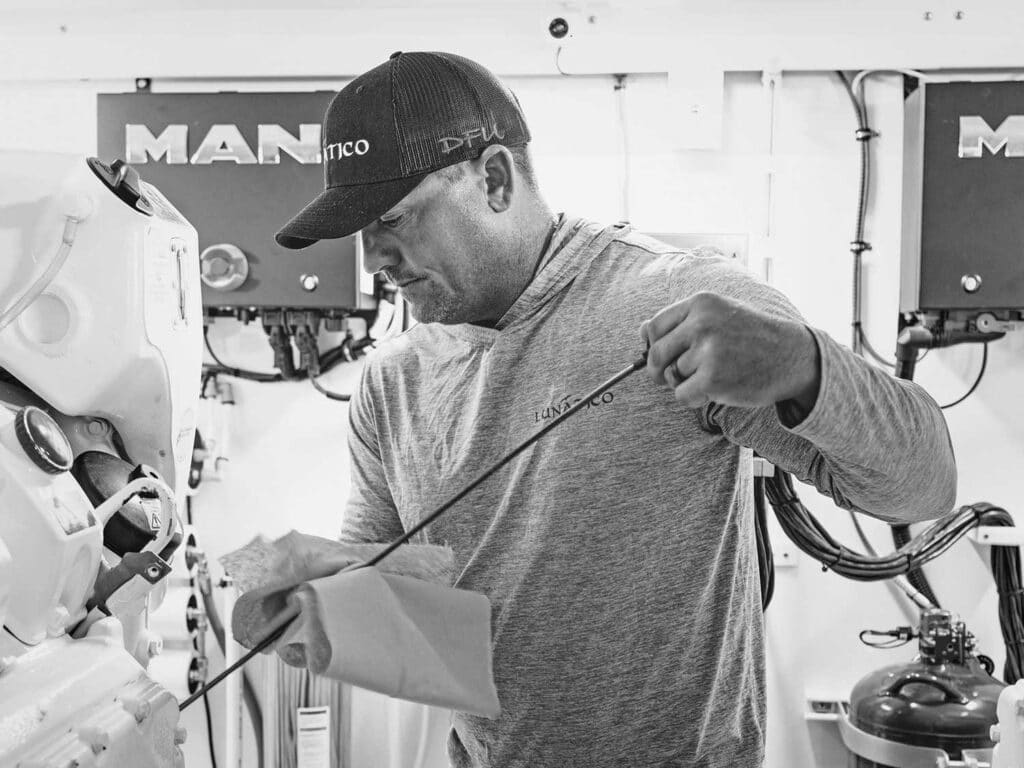
While there are plenty of real pros similar to Stanczyk who create great content while being at the top of their fishing game, there are probably even more who aggregate others’ posts or do a good enough job of looking the part for clicks. Creating content—especially in video form, which seems to get the most attention—requires a solid time commitment to perform regularly. I can tell you from experience that fishing for long hours and then editing videos while preparing to go again the next day can become an arduous task. For some, it’s worth the effort, while others just can’t be bothered. Once again, it’s the same as it’s always been: The loudest guy talking about what he’s caught isn’t always the best fisherman.
Read Next: Meet some of the talented craftsmen behind these incredible custom boats here.
Women also have a vastly different experience online in the traditionally male-dominated sport-fishing industry. It’s probably not much of a surprise that a bikini-clad model holding a pinfish will get more attention than the most photogenic marlin jump shots. Gillespie brings up that the masses are focused too much on the model types, and this can do a disservice to the authentic women in this sport, especially the ones who have legitimately worked their way up from the bilge to the deck (and some to the bridge) in the fishing sphere. “There’s no problem with the models doing what they do, or anyone making the most of their opportunities,” he says, “but at the same time, I think we should do more raising up of the women who have put in the time over the years and paid their dues.” And they have paid plenty. “It’s tough enough to make it in this industry as a woman to begin with, but the girls who are wearing long pants and sun shirts rigging baits and cleaning the boat every day should also have the same opportunities for sponsorships and the like.”
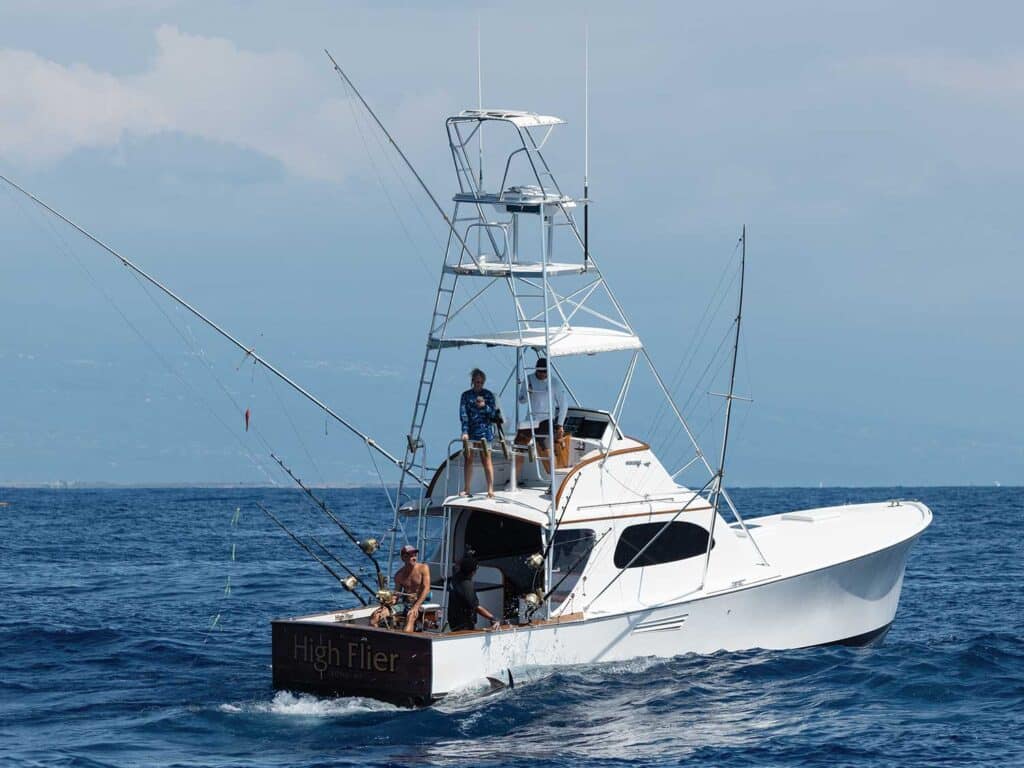
Can’t We All Just Get Along?
It’s almost a certainty that putting a giant group of people together on any sort of platform is going to bring some chaos. The internet acts as a microcosm of what happens on land, consolidated in one place, and with the option of anonymity. Keyboard warriors, relentless advertising, and extremely uneducated so-called activists will probably always live among your buddies’ fish pics and the latest viral marlin videos. It’s a pipe dream to think that we can all get along, but hopefully our industry as a whole can use the global platform to grow the sport in a positive way: to educate as many people as possible, successfully lobby for the industry itself—such as NOAA’s current offshore speed-restriction proposal for boats on the East Coast and in the Gulf of Mexico—and to fold new fishermen and boat owners into the mix.
Like most things, it is what you make of it. Social media can be a great way to get the word out and provide a platform for all of us to fight on the same side, but the bottom line is to use it in whatever way makes you happy or makes you money. Just cruise the comments section at your own risk.



